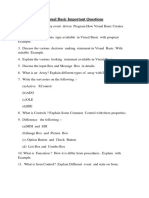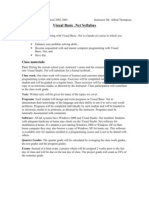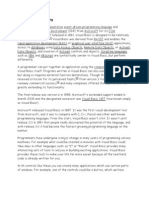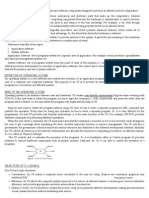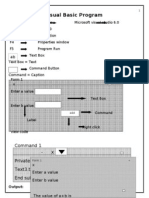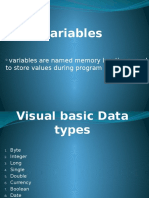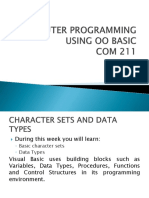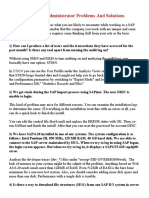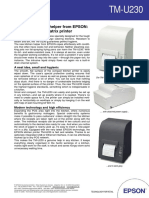100% found this document useful (1 vote)
1K views44 pagesVisual Basic Variables Guide
The document discusses variables, data types, and operations in Visual Basic. It defines variables as memory locations that can store data and change value during program execution. It describes different data types like integers, strings, dates that are appropriate for different types of data. It also covers variable scope, declaring and assigning values to variables, and using constants. Functions and operations for manipulating strings like concatenation, case changing, searching and extracting substrings are also summarized.
Uploaded by
z0r00zhCopyright
© Attribution Non-Commercial (BY-NC)
We take content rights seriously. If you suspect this is your content, claim it here.
Available Formats
Download as PPT, PDF, TXT or read online on Scribd
100% found this document useful (1 vote)
1K views44 pagesVisual Basic Variables Guide
The document discusses variables, data types, and operations in Visual Basic. It defines variables as memory locations that can store data and change value during program execution. It describes different data types like integers, strings, dates that are appropriate for different types of data. It also covers variable scope, declaring and assigning values to variables, and using constants. Functions and operations for manipulating strings like concatenation, case changing, searching and extracting substrings are also summarized.
Uploaded by
z0r00zhCopyright
© Attribution Non-Commercial (BY-NC)
We take content rights seriously. If you suspect this is your content, claim it here.
Available Formats
Download as PPT, PDF, TXT or read online on Scribd
/ 44

